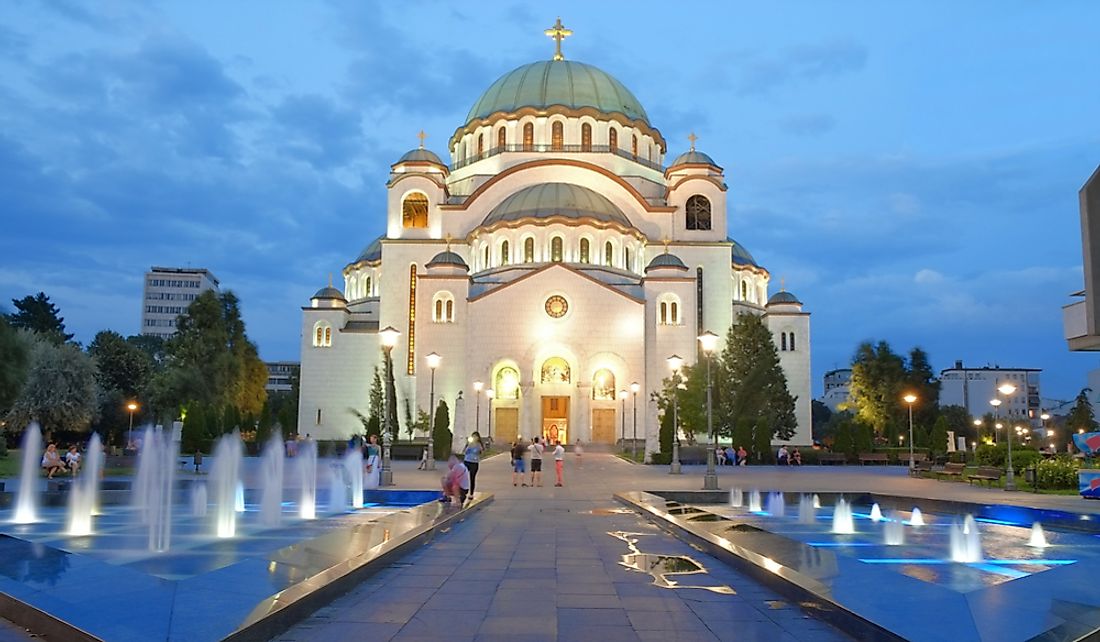Religious Beliefs In Serbia

Serbia is a nation located in Central and Southeast Europe. Officially the Republic of Serbia, religion has played a key role in shaping the country's history and culture. Serbia is a predominantly Christian country, particularly Orthodox Christian (85%), while Roman Catholicism (6%) is the second most common Christian denomination. About one percent of Serbia’s inhabitants are Protestant, while Muslims make up some three percent of the population. Serbia also has a small Jewish population.
Orthodox Christianity
The Serbian Orthodox Church, which is part of the Eastern Orthodox Church, was founded in 1219 by Saint Sava. Also known as the Orthodox Catholic Church, the Eastern Orthodox Church is the second largest Christian church in the world, with followers estimated to number between 200 and 260 million.
As a theologically independent and autocephalous institution, the Serbian Orthodox Church appoints its own leader rather than operating under the direction of an outside religious authority, such as an archbishop. The head of the church is the Serbian Patriarch, a position currently held by Irinej, serving as the Serbian Orthodox Church’s 45th Patriarch and spiritual leader since 2010. Irinej’s full title is His Holiness the Archbishop of Peć, Metropolitan of Belgrade and Karlovci, and Serbian Patriarch Irinej.
Roman Catholicism
The number of Serbians who belong to the Roman Catholic Church currently stands at approximately 356,957. The majority of Catholics in Serbia live in the northern part of the country, particularly in Vojvodina, an autonomous Serbian province established in 1944. This region is known for its mix of ethnic minorities, which include Hungarians, Croats, Bunjevci, Czechs, and Slovaks.
The country’s Roman Catholic hierarchy consists of one archdiocese, three diocese (or ecclesiastical districts) and one apostolic administration headed by a clergy member who is appointed by the head of the Roman Catholic Church, the Pope.
Protestantism
The majority of Protestants currently living in Serbia are members of the Lutheran Church. Slovaks make up the largest population within Serbia's Protestant church, with over 50,000 members residing in the province of Vojvodina. The second largest Protestant denomination in Serbia is Calvinism, which is primarily practiced by members of the Reformed Hungarian Church. Other minority Protestant churches in the nation include the Christian Nazarene Community, Seventh Day Adventist Reform Movement Union, Church of God, and Reformed Christian Church.
Islam
Islam has a population of approximately 222,282 followers in Serbia, people making it the nation’s third largest religion. The majority of Muslims live in the southwestern parts of the country, particularly in the region of Raška. Serbia’s largest community of Islamic followers are Bosniaks or Bosnians, who are an ethnic group made up of South Slavics who practice the Sunni tradition of Islam.
Judaism
Although the history of Judaism in Serbia dates approximately two thousand years, few Jewish communities currently exist throughout the country. Prior to the onset of World War II, it is estimated that 33,000 Jewish residents lived in the nation, but two-thirds of this population were killed during the Holocaust. Today, it is estimated that Serbia’s Jewish population stands at only 578.
Religious Beliefs In Serbia
| Rank | Religion | Followers |
|---|---|---|
| 1 | Orthodox Christianity | 200-260 million |
| 2 | Roman Catholicism | 356,957 |
| 3 | Protestantism | 50,000 |
| 4 | Islam | 222,282 |
| 5 | Judaism | 578 |











